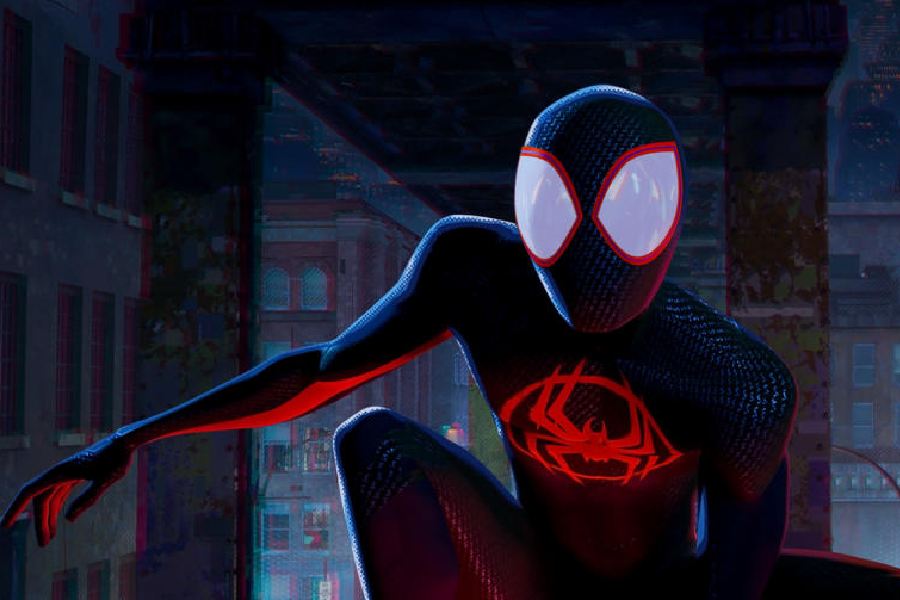Heart and humour, spectacle and soul... all these, and more define Spider-Man: Across the Spider-Verse. The latest outing in the Spider-Man canon, which chronicles the adventures of different versions of the friendly neighbourhood superhero, makes for an exhilarating ride on the space-time continuum.
Across The Spider-Verse is a follow-up to Spider-Man: Into the Spider-Verse, which in itself was a cultural watershed moment, throwing down the gauntlet for other films in the genre, and even bending it at various points. The 2018 film not only introduced fans to a Spider-Man never seen in a feature film with Miles Morales (voiced by Shameik Moore) but also rolled out the concept of the cinematic multiverse, all the while marking a huge shift in Hollywood animation.
Across The Spider-Verse, fittingly, follows the sequel blueprint of going bigger and bolder, its 140-minute runtime fully capturing the sensation of getting absorbed in a comic book.
Across The Spider-Verse comes at a time when much of the superhero world on screen is stuck in a state of saturation, with very little innovation and imagination at play. But this new film not only reaches the lofty heights that its Academy Award-winning predecessor achieved, but it also breaks new ground both in terms of storytelling and spectacle. Strikingly different but equally gorgeous styles make the animation of Across The Spider-Verse flow at the pace of a richly etched comic book, coupled with a deeply emotional, layered and epic story that has dual protagonists. At first glance, it may seem like a hyper-frenetic, brilliantly coloured blur, and yet the film is grounded in a strong sense of self even as it takes a leap. It is epic and intimate all at once.
Getting our spidey senses tingling right at the beginning is the focus on the super-powered parallel world version of Gwen Stacy (Hailee Steinfeld), a drummer and somewhat depressed teen after the death of her version of Peter Parker (and her cop father’s determination to hunt down the masked menace he thinks killed him). A few brilliantly mounted psychedelic action scenes later — including one in which Gwen faces off against a vulture in a Leonardo Da Vinci-style universe — the audience is introduced to a pan-dimensional Spider-Society tasked with tracking down multiple menaces to the cosmos.
Meanwhile “our” Spider-Man, the now 15-year-old Miles Morales is shown navigating through the regular life of a teenager in New York City. Along with prepping for university, he is also doing some crime-fighting on the side, even if current “villain of the week” The Spot (Jason Schwartzman), a portal-potholed nemesis, is a tad trickier than he looks.
Before long, Miles joins a group of Spider-Folk from other dimensions, including bestie/potential love interest Gwen/Spider-Woman, slacker/mentor Peter B. Parker (Jake Johnson) and intense, vampiric Spider-Man 2099 Miguel O’Hara (Oscar Isaac), bouncing from one alternate universe to another in pursuit of The Spot, whose larger goal includes annihilating the Spider-People inhabiting their own universe.
Apart from the wholesome wallop it imparts to the superhero genre, Spider-Man: Across the Spider-Verse is a work of gorgeous visual art. The dynamic, ingenious sequel has heroes from each universe moving in different frame rates that are uniquely defined, as are their individual art styles. Expressionistic, watercoloured worlds, Abstract Expressionism, storybook illustrations, ballet and punk — Across the Spider-Verse is a smorgasbord of different aesthetics which, in the hands of a lesser director would have turned into a muddled mess, but the trio of Joaquim Dos Santos, Kemp Powers, and Justin K. Thompson ensure that all the varied sensibilities come together with seamless synergy.
Even though Across the Spider-Verse can feel too fast or too packed at times, it remembers to slow down and maintain focus where it counts. However, there is also the risk that the feast of characters and animation styles could delight some fans and also exhaust others. But for whatever it is worth, we will stick our necks out and acknowledge that this is perhaps the most immersive and genre-defying multiverse story in a long time, pushing far beyond the boundaries of what superhero stories should and could be.
I liked/ didn’t like Spider-Man: Across the Spider-Verse because.... Tell t2@abp.in











